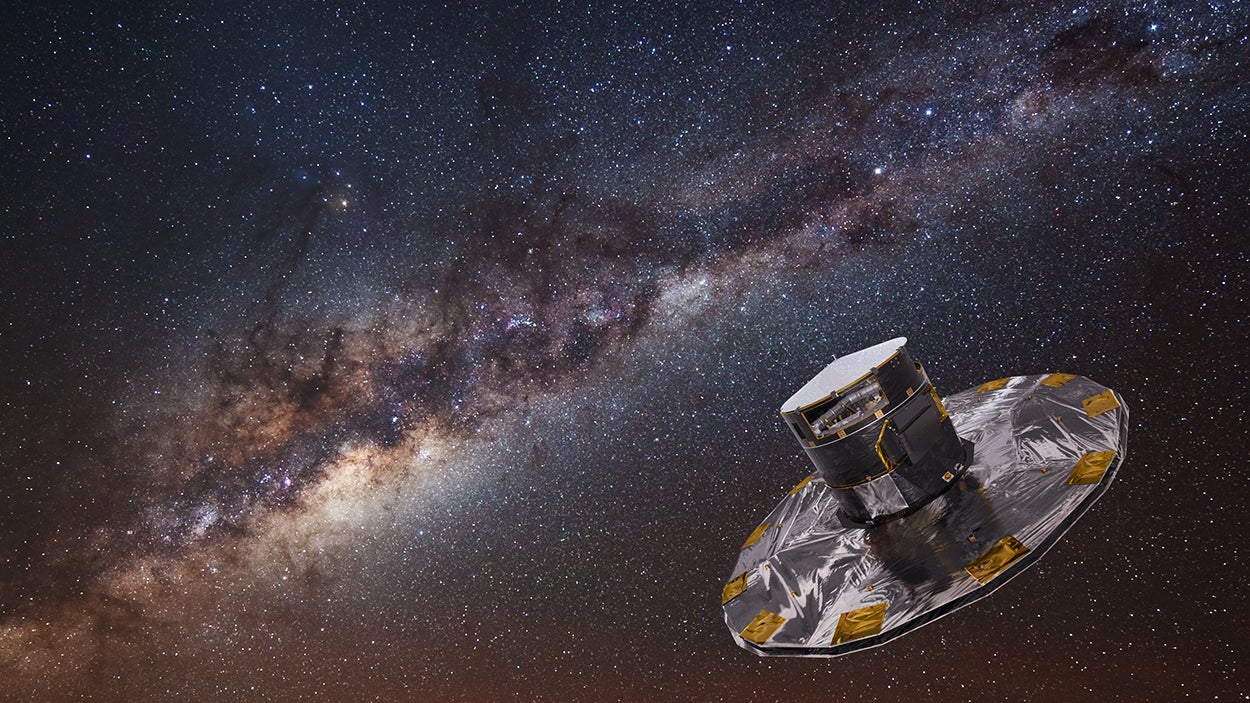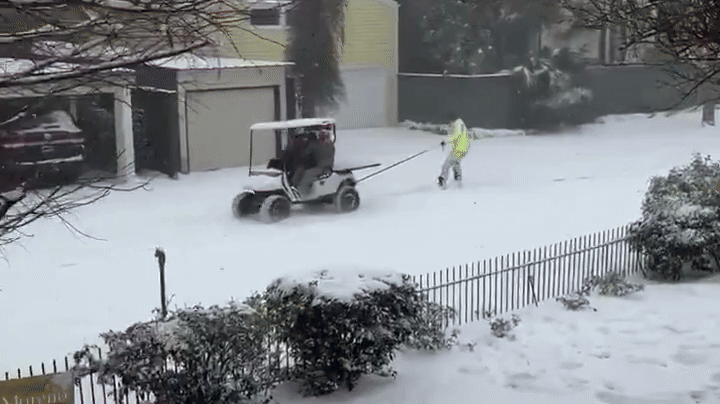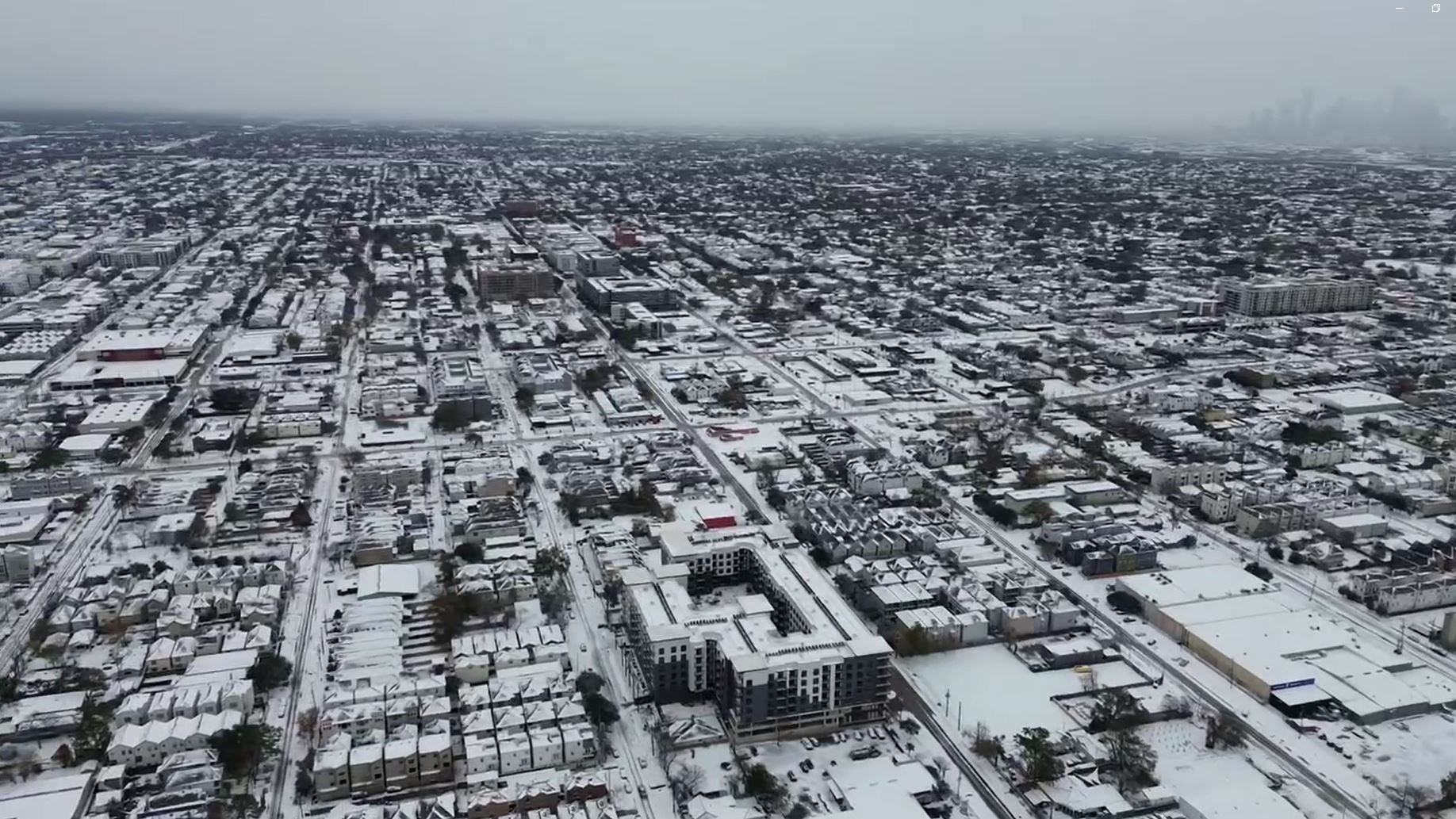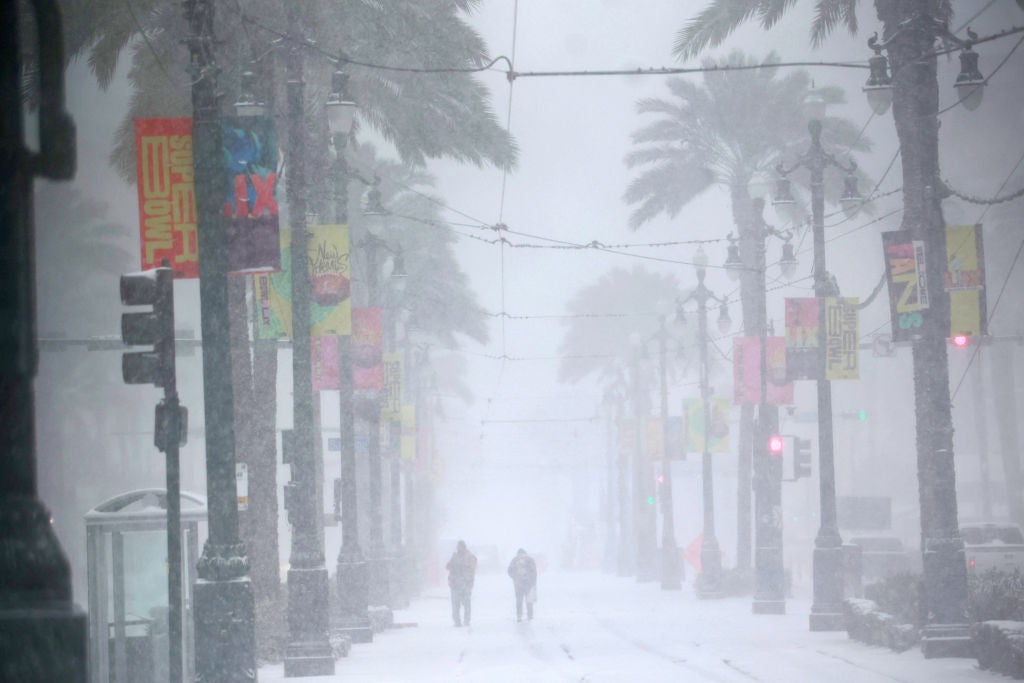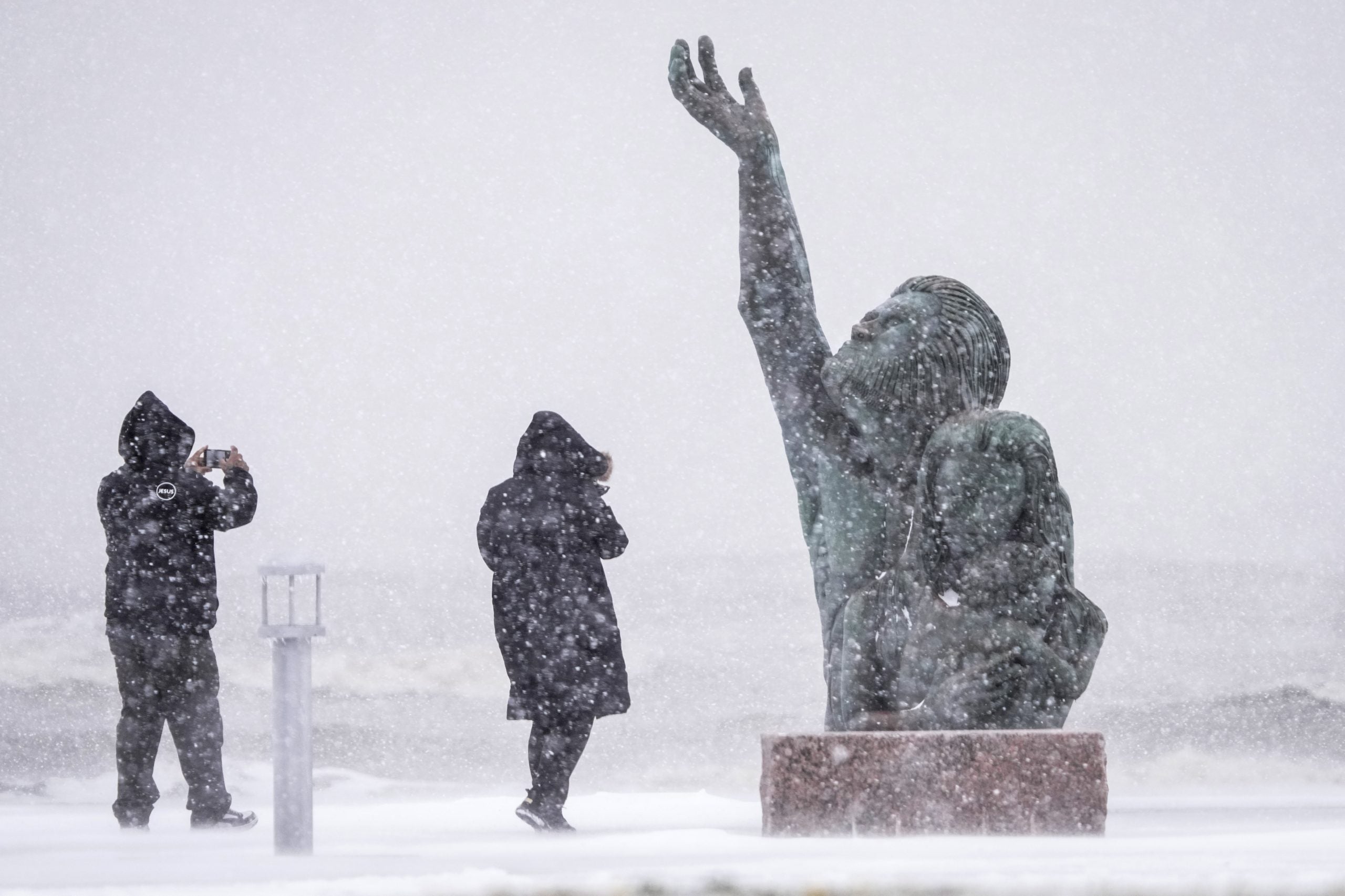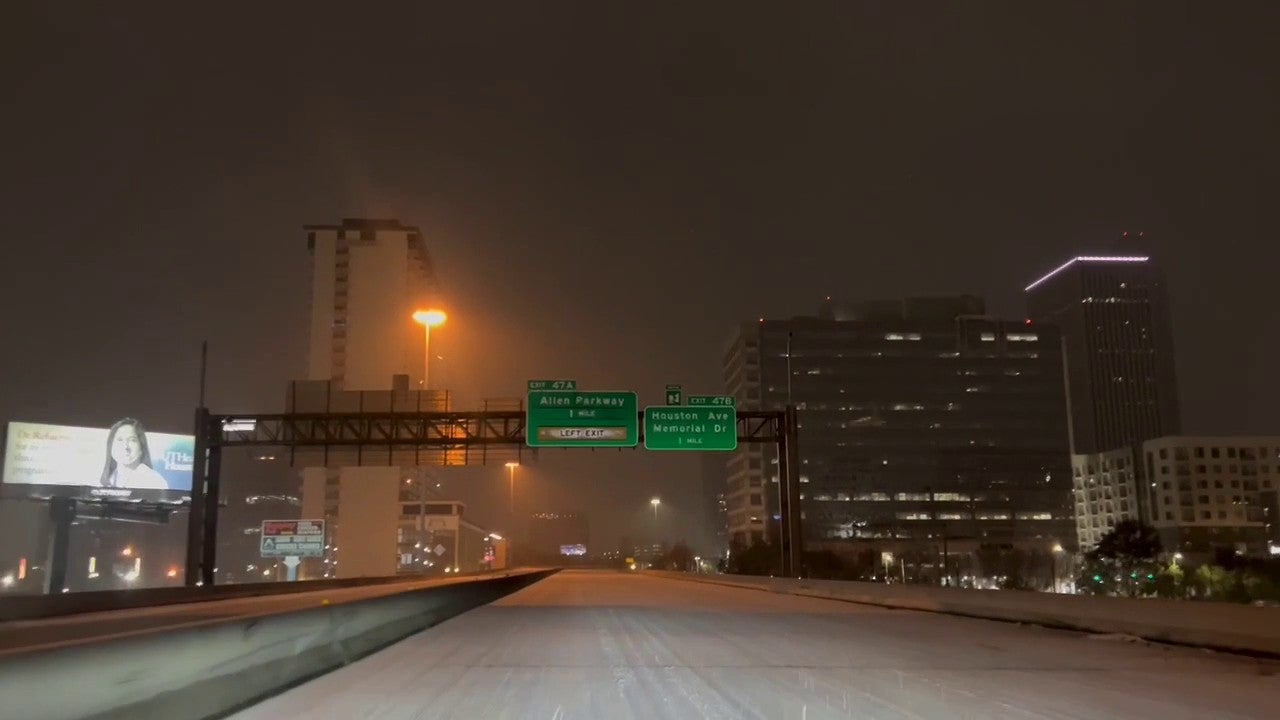Our solar system is estimated to be 4.5 billion years old and is made of eight planets, thousands of comets and countless other features that can light up the night sky. Advancements in astronomy mean many of the events are tracked, allowing scientists to determine years ahead of time when celestial bodies may be visible from Earth.In 2025, the sky will be illuminated by 12 full Moons, plenty of meteor showers, four eclipses and three Supermoons.As the events of 2025 unfold, astronomers and casual skywatchers will find themselves peering into the galaxy to catch a glimpse of the celestial sights.Here’s a calendar with the best astronomical events you won’t want to miss throughout the year.7 TIPS ON HOW TO SHOOT THE MOON WITH A CAMERA2nd-3rd: Quadrantid meteor shower peakThe annual meteor shower, which begins in December, peaks in early January every year. Some skygazers consider the meteor shower the best of the year because of the lack of moonlight, but the event’s peak only lasts a few hours each night. NASA said that during the height of activity, dozens of meteors can be seen every hour if the skies are clear and there is minimal light pollution. The event is usually one of the five major meteor showers of the year.13th: Full Wolf MoonThe first full Moon of the year will rise in the east and peak at 5:27 p.m. EST, meaning the best viewing in North America will be on Thursday evening after the Sun sets. According to the Old Farmer’s Almanac, the nickname originates from the time period when Native Americans noticed wolves howling in hunger at the Moon. Other notable names for the lunar body include the Center Moon and the Cold Moon – all serve as reminders that the Northern Hemisphere is in the heart of winter.16th: Mars closest approach to EarthThe Red Planet will make its closest approach to Earth in mid-January, when the planet will be around some 58 million miles away. Mars’ opposition occurs roughly every two years and will be visible nearly the entire night. NASA says the planet appears reddish due to the oxidization of iron in its many rocks.22nd: Planetary parade peakThe planets of Venus, Mars, Jupiter and Saturn will be visible without the use of sophisticated equipment. The four planets will be visible for most from after sunset to just before midnight. Several of the heavenly bodies will continue to be visible well into February. Additionally, Neptune and Uranus will be visible from Earth but only with the use of an advanced telescope or similar device.STUNNING VIDEO SHOWS MERCURY PASSING BY THE SUN12th: Full Snow MoonThe year’s second full Moon will peak in brightness around 8:53 a.m. EST, meaning skywatchers will have to catch the sights either before the peak or wait until the evening after. The nickname comes from February usually being a chilly month with plenty of snow on the ground in the northern latitudes. According to the Old Farmer’s Almanac, other common names for the Moon include the Bald Eagle Moon, Bear Moon, Goose Moon, Groundhog Moon and Hungry Moon. Groundhog Day is celebrated on Feb. 2 every year, so occasionally, a full Moon does occur on the date of the annual tradition. The last time there was a full Moon on Groundhog Day was in 2018, and the next will be in 2032 due to the lunar cycle.FIRST COLOR IMAGES FROM NASA’S JAMES WEBB SPACE TELESCOPE REVEAL BRILLIANT NEBULA, GALAXY CLUSTERS9th: Daylight saving time beginsAt 2 a.m. local time, clocks will “spring forward” one hour to mark the start of daylight saving time, which will continue until Nov. 2, 2025. While this biannual time change is not tied to any astronomical events, it does have significant implications. DST reduces the amount of time available to observe stars, planets and auroras in the spring and summer evenings, as the sky remains lighter later. As a result, stargazers must stay up later or wake up earlier to catch these celestial sights.14th: Full Worm Moon & total lunar eclipseThe first full Moon of meteorological spring is known as the Worm Moon and will reach its peak shortly before 3 a.m. EDT. At times, the Moon might seem dimmer than usual, and that’s because the celestial body is set to pass through Earth’s shadow during what is known as a total lunar eclipse. Unlike a solar eclipse, skywatchers won’t need protective glasses to view the phenomenon. The Moon will take on an orange-reddish color and is often referred to as the “Blood Moon,” as Earth’s atmosphere acts as a light filter. For cities along the East Coast, the event will begin shortly before midnight and last until 6 a.m., with a peak around 2:58 a.m. The Moon may appear even redder if there are clouds or dust in the atmosphere over Europe, Asia, Australia, Africa and the Americas. NASA says there will be a second total lunar eclipse in the fall, but it will not be visible from North America.20th: Spring equinoxAlthough meteorological spring began on March 1, the season on the astronomical calendar begins March 20 at 5:01 a.m. EDT. The equinox occurs when the Sun moves directly over the equator, and as a result, the Northern and Southern Hemispheres receive roughly equal amounts of daylight. The amount of sunlight in the Northern Hemisphere will increase each day through the summer solstice – the longest day of the year. The spring equinox does not occur on the same date every year, but most years happens on March 20. Despite entering spring, over half of the country is still susceptible to frost and freezes, which can be detrimental to new plants.29th: Partial solar eclipseParts of the U.S. East Coast, Europe, Africa and Asia will be privy to a partial solar eclipse, when the Moon will block out part of the Sun. The partial solar eclipse will begin at 4:51 a.m. EDT and end just after 8:44 a.m. EDT, but due to the alignment of the celestial bodies, the event will only be visible for around 20 minutes at any given location in the U.S. Times of visibility will vary depending on location, but for a community such as New York City, the event is expected to be observable from around sunrise at 6:44 a.m. until 7:05 a.m. Based on NASA projections, Canada will be home to the best viewing, with about 93% of the Sun being covered, while NYC will see about a third of coverage.Similar to a total solar eclipse, the only proper way to watch the event is through special glasses or devices that meet the international standard.If you miss the event, the next solar eclipse will be on Sept. 21, but it’ll only be visible from parts of Australia, Antarctica and the Pacific Ocean.PIECE OF SPACE SHUTTLE CHALLENGER DISCOVERED OFF FLORIDA COAST 37 YEARS LATER13th: Full Pink MoonThe first full Moon of astronomical spring will peak at 8:22 p.m. EDT, but when compared to most of the other full Moons of the year, it’ll appear rather small. That is because April’s Moon is known as a Micromoon, when it is at one of its furthest points from Earth. On an average day, the Moon is some 238,000 miles away from Earth, but during the Mircomoon phase, the distance increases to about 252,000 miles. The month’s full Pink Moon usually coincides with the sprouting of the season’s first flowers. The Moon will not appear pink, even though the nickname suggests it.21st – 22nd: Lyrid meteor shower peakSpace debris from comet C/1861 G1 Thatcherm will be visible from the middle to late part of April and is known as the Lyrid meteor shower. NASA says the comet was originally discovered by astronomer A.E. Thatcher in 1861 and since then has not completed an entire orbit around the Sun. The comet is estimated to take about 415 years to complete a full orbit. Astronomers say the average meteor shower usually produces 10 to 20 meteors per hour, but sometimes, the event can produce as many as 100 meteors per hour. Since the Moon is in its waning phase, lunar light pollution will be minimal, making it easier to see the meteors.SEE RENDERINGS OF SPACE STATION TO BE BUILT AROUND THE MOON5th-6th: Eta Aquarid meteor shower peak Halley’s Comet usually produces one of the best meteor showers of the year, visible from mid-April through late May. NASA said the Eta Aquarids usually leads to about 60 meteors per hour, but the best sights will be from the Southern Hemisphere. The best viewing will occur if the skies are clear, and you are well away from any light pollution, during the early morning hours before sunrise. The comet is thought to be at least 16,000 years old and also causes October’s Orionids meteor shower.12th: Full Flower Moon The last full Moon of spring will peak in illumination at 12:56 p.m. EDT, meaning residents in North America will either have to view the event either during the night before or after. The Farmers’ Almanac said the Moon gained its nickname through observations by Native Americans who noted flowers were in abundance during the late spring. Peonies, roses, lilacs, dianthus and tulips are all types of flowers that can be spotted blooming during the month. Other names for the full Moon include the Corn-Planting Moon and the Milk Moon. Similar to April, the Moon is known as Mircomoon because of its distance to Earth and will be the last one until November.REPORT FINDS ARTEMIS III MOON LANDING LIKELY YEARS BEHIND SCHEDULE11th: Full Strawberry Moon The first full Moon of meteorological summer is set to peak at 3:43 a.m. EDT, meaning the entire country will be able to see the event at its height. June is the peak season for the strawberry and is the reason behind this full Moon’s nickname. Strawberries are typically planted after the last frost in the spring and are ready to be picked during summer. According to North Dakota State University, the first historical records of the fruit being cultivated date back to ancient Rome but are considered to be Native to Asia, Europe and the Americas. The Strawberry Moon is only one of two full Moons that have nicknames rooted in agriculture.20th: Summer solstice Earth’s North Pole will reach its greatest tilt toward the Sun during the summer solstice. The Earth’s tilt of approximately 23.5 degrees causes the most direct sunlight to be aimed at the Northern Hemisphere during our summer. The event marks the arrival of astronomical summer, not meteorological summer, which began on June 1. The solstice officially arrives at 10:41 p.m. EDT and annually occurs sometime between June 20-22 during any given year. Even though the Sun’s rays are the most direct during June, due to a lag time, it still takes about another month for the Northern Hemisphere to experience its warmest temperatures of the year. An impact that is more instantaneous is the change in the amount of sunlight, which averages around 15-16 hours this time of year across North America. After June 20, daylight will start to decrease across the Northern Hemisphere and will do so until December’s winter solstice.WHY TORNADO ALLEY IS SHIFTING EAST11th: Full Buck Moon The Moon, nicknamed for a male deer, will peak during the morning hours in North America. The Farmer’s Almanac said this full Moon is typically also called the full Thunder Moon or the Hay Moon. Officially, the Moon will reach peak illumination at 4:36 p.m. EDT, so the best viewing will be either on the night before or after. Male deer usually begin growing new antlers in late spring, which become prominent during the summer months.29th-30th: Southern Delta Aquarid meteor shower peak If you see a meteor anytime from mid-July through the middle of August, it is likely part of the Delta Aquarids. The meteor shower comes from the comets Marsden and Kracht and will be the first meteor shower to catch a glimpse of during the summer in North America. Due to the waxing crescent stage, the Moon will not hinder seeing upwards of 20 meteors per hour. The best time to attempt to see the show is between midnight and dawn each night.WEATHER WATCHERS NEEDED TO LOCATE CLOUDS ON MARS9th: Full Sturgeon Moon North America’s largest freshwater fish is the white sturgeon, and it has a Moon named after it. The eighth full Moon of the year will peak in brightness at 3:55 a.m. EDT and will be bright through the weekend. It is widely accepted that the event is known as the Sturgeon Moon because fish in the Great Lakes and other regions of North America are more easily caught before the summer winds down.There is not a Blue Moon in 2025 since there are only 12 full Moons during the year. A Blue Moon happens when there are four full Moons during an astronomical season or when a month features two full Moons. The phenomenon last made an appearance in August 2024 and will make its next return on May 31, 2026. The basis of the name appears to be rather murky, with no solid avenues to trace back to the term’s origin. The Moon does not turn a hue of blue, and the occurrence of the Blue Moon is fairly common, which is the opposite of the expression “once in a blue moon,” which is used to signify a rarity.11th-12th: Perseid meteor shower One of the most anticipated meteor showers of the year will become active in mid-July and last through late August. Peak activity is expected on the night of August 11 and the early morning of August 12. Originating from debris left behind by Comet Swift-Tuttle, the Perseids can produce up to 100 meteors per hour, making them one of the year’s most spectacular meteor showers. In North America, the display can begin as early as 10 p.m. and extend into the pre-dawn hours. According to NASA, the Perseids are known for producing numerous fireballs, which make the event even more remarkable.WHAT IS A MICROMOON?7th: Full Corn MoonSeptember’s full Moon is usually known as the Harvest Moon, but that is not the case in 2025, as the lunar body’s nickname is the Corn Moon. This is because the date of October’s full moon is closer to the fall equinox than September’s, so the next full Moon will be known as the Harvest Moon. The autumn equinox will occur on Monday, Sep. 22, while October’s full Moon is on Tuesday, Oct. 7. Most years, the Harvest Moon occurs in September, but once in about every four years, the occurrence happens one month later. According to the Farmer’s Almanac, the nickname originates from the Moon appearing especially bright, allowing harvesters enough light to work through the night. The moon rises early and appears exceptionally bright, allowing farmers to continue harvesting into the night.7th: Total lunar eclipse for Europe, Africa, Asia & Australia For the second time in 2025, Earth will pass between the Sun and the Moon, causing the planet’s shadow to be visible. Unlike the March event, this total lunar eclipse will only be visible in parts of Europe, Africa, Asia and Australia. The eclipse will begin around 11:30 a.m. EDT and last until 4:55 p.m. EDT, which is why it will not be visible from the U.S.On average, one or two total lunar eclipses happen every year, but where they occur and who can see them varies.The lunar eclipse will take place exactly two weeks before a solar eclipse.21st: Partial solar eclipseThe Moon will cover only part of the Sun when it travels between the giant star and the Earth. Due to the orbit of each, this partial solar eclipse will only be visible to limited part of the globe, stretching from the southern Pacific Ocean and Antarctica to New Zealand. According to NASA, viewing will be best from New Zealand, with an estimated maximum coverage of 76%. The event is scheduled to begin at 1:30 p.m. EDT and last to nearly 6 p.m. EDT. The partial solar eclipse will be the last event until a string of eclipses in 2026.US, CHINA IN RACE TO RETURN HUMANS BACK TO THE MOON22nd: Autumn equinoxThe final equinox of the year will take place at 2:19 p.m. EDT, marking the moment when the Sun crosses the equator from the Northern Hemisphere into the Southern Hemisphere. The day roughly results in equal amounts of day and night around the globe as the calendar marches towards the winter season. The winter solstice will mark the shortest day of the year in the Northern Hemisphere and occur on Dec. 21. The spring equinox will signify the halfway point between the winter and summer solstices and will occur on Mar. 20, 2026.7th: Full Harvest MoonThe first Supermoon of the year will peak in illumination just before midnight on the East Coast. The full Moon is usually called Hunter’s Moon, but because of the late date of the fall equinox, the month’s event is called the full Harvest Moon. Late September and October are typically some of the busiest months for farmers as crops are harvested before cold weather arrives.Supermoons occur a few times a year when the lunar body reaches what is known as perigee. Perigee is the closest point to Earth in the Moon’s orbit. Due to the increased gravitational pull from Earth’s only natural satellite, higher-than-normal tides will be experienced. These are often called King Tides and can lead to nuisance flooding in low-lying coastal communities.UFO SIGHTINGS TO BE STUDIED BY FORMER ASTRONAUT, HANDPICKED NASA GROUP5th: Full Beaver Moon The second of three Supermoons will peak around 8:20 a.m., so North America will have to watch for the Moon either the night before or after its official peak. Because of its close approach, the full Beaver Moon will be the brightest and largest event of the year. According to the Farmer’s Almanac, there are varying thoughts about how November’s event got its nickname. Some believe it originated because of traps put out by Native Americans to capture beavers, while others believe it comes from beavers building their winter dams before waterways freeze.17th: Leonid meteor shower peak Under ideal conditions, the Leonids will peak between midnight and sunrise on Nov. 17. The waning Moon will help to not interfere with the show, which began in early November and will end in early December. Skygazers may see 10 to 20 meteors per hour during the event since it won’t be at peak levels. According to NASA, about every 33 years, the Leonids produce a meteor storm with at least 1,000 meteors per hour. The last major event occurred in 2002, so with each preceding meteor shower, the event should get more vivid until the peak.WHEN CAN YOU EXPECT THE FIRST SNOW OF SEASON?4th: Full Cold Moon The final full Moon of the year will be the Cold Moon. If the skies are clear, the lunar body will reach full illumination at 6:14 p.m. EST.The Moon’s nickname coincides with cold weather and winter’s arrival in the Northern Hemisphere.Similar to October and November, December’s full Moon is also considered to be a Supermoon due to its proximity to Earth.If you miss the site, the first full Moon of 2026 won’t grace the sky for another 29.6 days, which will be Jan. 3. 13th-14th: Geminids meteor shower peakOne of the better meteor showers of the year will start around the beginning of the month and last until late December but peak on the night of the 13th and the morning of the 14th. The meteor shower is caused by Earth’s excursion through debris of an asteroid named 3200 Phaethon and during the peak of activity, some 100 meteors can be spotted every hour. Because the Moon will be about 35% full, there will be some interference with the moonlight.21st: Winter solsticeThe Northern Hemisphere will officially enter astronomical winter at 10:02 a.m. EST on Dec. 21. The date is also known to be the shortest day of the year, and starting on the 22nd, days will have more sunlight.Increasing sunlight will continue to accumulate daily through June 21, 2026.Similarly, as to what happens around the summer solstice, the winter solstice is not usually when the season’s most extreme temperatures impact the Northern Hemisphere. There is what is known as a seasonal lag, and January and February usually produce the coldest weather of winter.
